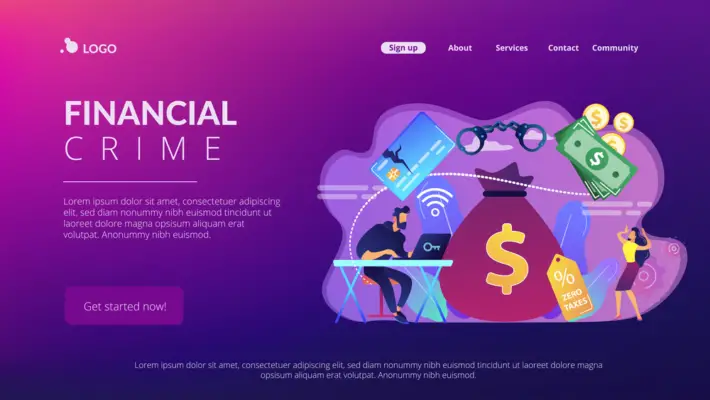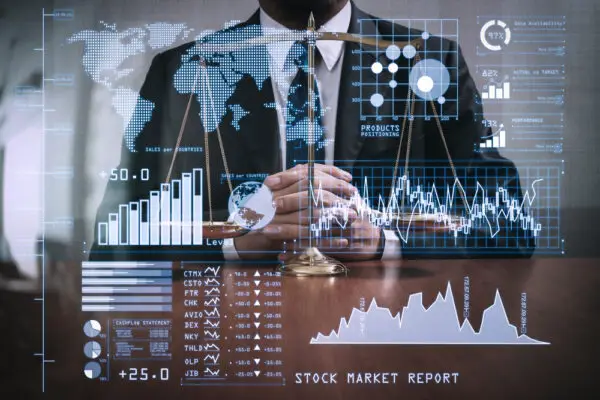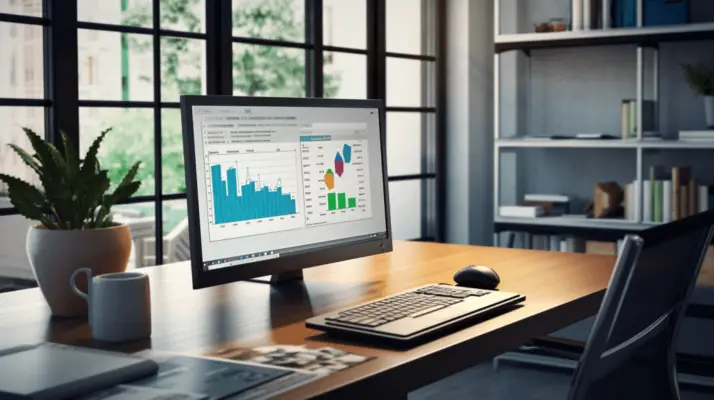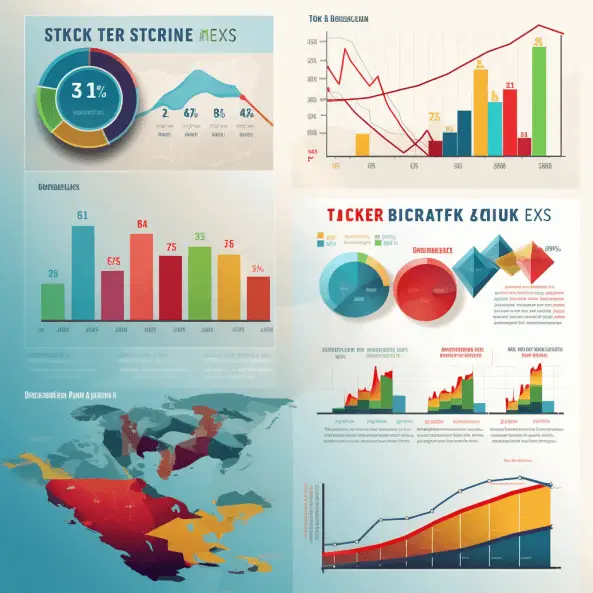In an increasingly complex financial environment, risk management plays a critical role in ensuring the longevity and success of a business entity. They include:-
- Credit risk indicators: These include factors such as debt-to-income ratios, payment histories, loan-to-value ratios, collateral value assessments, and more. (source: Risk Publishing)
- Market risk indicators: These include factors such as changes in interest rates, exchange rates, commodity prices, and other market conditions that can impact financial performance. (source: OpsDog)
- Operational risk indicators: These include factors such as employee turnover rates, customer complaints, system downtime, and other operational issues that can impact financial performance. (source: TechTarget)
Understanding and effectively using key risk indicators (KRIs) in finance can provide an early warning system for potential threats, aiding in efficient risk mitigation.
Certain financial ratios, credit score ratings, the Market Volatility Index (VIX), and various economic indicators stand out as reliable KRIs often utilized by today’s professionals in the finance sector.
Together, these tools offer invaluable insight into an entity’s fiscal stability, the fluctuating state of the market, and looming economic shifts, essentially acting as compasses to navigate the often uncertain waters of financial decision-making.
Financial Ratios
Understanding the fiscal stability of a company is not as simple as it sounds. Various strategies are used to assess the financial health of an organization, and one of the most effective among them is financial ratio analysis.
This actionable technique, applied with precision and understanding, can cast light on a company’s fiscal stability, revealing potential and pitfalls like nothing else.
To begin with, liquidity ratios such as current and quick ratios are the first line of self-introspection in any company’s financial journey.
These ratios demonstrate whether a company can meet short-term obligations. High liquidity ratios indicate a firm’s capability to pay off its short-term liabilities with its short-term assets, thereby showcasing its robustness in the face of financial distress.
Profitability ratios also prove their worth in this context. Profit margin, return on assets, and return on equity ratios are among these. By determining how effectively a company uses its assets to generate profit, these ratios unravel the profitability of an organization and delineate its underlying fiscal stability.
In the pursuit of understanding a company’s fiscal stability, debt ratios are equally crucial. They quantify a company’s capacity to repay long-term debts.
Companies with fewer obligations, illustrated by a low debt-to-equity ratio, depict strength in their fiscal stability, pointing towards long-term survival.
Another noteworthy metric is the efficiency ratio, for instance, the inventory turnover ratio. Think of it as an indication of how efficiently a company manages its resources. Efficient companies that turn over inventory rapidly can often remain more stable over time due to their knack for quick recoveries.
Finally, we reach market value ratios, such as the price-to-earnings ratio. These ratios evaluate public opinion about a company’s shares on the stock market. While these don’t directly show a company’s fiscal stability, they accurately gauge how the market perceives the company’s fiscal health.
When rightly interpreted, the story these ratios tell provides a comprehensive view of a company’s fiscal stability. Would it be reasonable to put all your eggs in one ratio’s basket? No. But by interpreting the interplay of these ratios, one can glean powerful insights into a company’s financial health and economic resilience. Because remember – the devil, as they say, always lies in the detail.

Credit Score Ratings
Credit scores are an intriguing beast in the world of finance, business, and personal spending, wielding a great power to make or break opportunities. Whilst the above-mentioned ratios and financial figures are unquestionably critical and indispensable tools for risk analysis, the influence of a credit score cannot be understated, as it plays a pivotal role in risk analysis for lenders, insurance companies, and even employers.
A credit score, by its definition, is a numerical expression that represents the creditworthiness of an individual or a business. However, in the arena of risk analysis, it serves as a valuable prediction tool.
It communicates the likelihood of the person or entity defaulting on a loan based on their past financial behavior. The lower the score, the higher the risk inferred.
Hence, lenders perceive credit scores as invaluable indicators of potential risk, helping them decide whether to grant credit, what interest rate to charge, or whether to renew a loan.
Apart from lending companies, credit scores also come into play in the insurance industry. They aid insurers in pricing insurance policies, as studies suggest a correlation between low credit scores and the probability of filing an insurance claim.
Insurance companies may consider low credit scores synonymous with higher risk, resulting in higher premiums.
Employers, especially those in industries dealing with financial products or confidential information, have also been known to evaluate an applicant’s credit score to assess their financial management skills and integrity. This might sound unconventional, but it’s not unheard of in today’s hyper-competitive job market.
Furthermore, credit scores go beyond the borders of individual repercussions. They also impact business-to-business transactions.
Suppliers use a company’s credit score to assess credit risk before providing products or services on credit and setting credit terms.
In essence, credit scores are an unavoidable pillar in risk analysis across multiple industries. Fluctuating between a facilitator and a barrier, these three-digit figures fly the flag for financial trustworthiness and reliability, holding the scepter that can open—or shut—the door to opportunities.
Be it for personal or business purposes, it’s clear that maintaining a good credit score is less of a necessity and more of an imperative in the world of finance and beyond.

Market Volatility Index (VIX)
Moving onto a financial instrument that is more specialized yet equally crucial – the Market Volatility Index (VIX). Brilliantly conceived by the Chicago Board Options Exchange (CBOE), the VIX has been dubbed the “fear gauge.”
It measures the market’s expectation of future volatility using options of the S&P 500 Index. The VIX is inherently a forward-looking indicator, providing potential insight into market sentiment.
Simply put, when the VIX rises, it suggests an increased level of fear and uncertainty in the markets. High volatility manifests itself via significant price swings and heavy trading volume.
Conversely, a low VIX indicates investor complacency or confidence. Therefore, it is an indispensable tool for those in tune with market dynamics.
The VIX doesn’t just exist in a vacuum; it has real-world implications on investment strategy and planning. For instance, a sharp increase in the VIX could signal an opportune moment for investors to hedge their portfolios against a potential decrease in the market.
Moreover, options traders often turn to the VIX to help price options contracts since it directly impacts option volatility premiums.
Furthermore, with the evolving landscape of financial technology available to just about anyone with internet access, retail investors also utilize the VIX. Online trading platforms and various financial apps allow everyday investors to observe, track, and integrate the VIX into their investment strategies.
The true power of the Market Volatility Index lies within its capacity to complement other market indicators. Its usage heightens the credibility of risk analysis when used in conjunction with liquidity ratios, debt ratios, and profitability ratios. Together, they provide a comprehensive snapshot of market conditions.
Data-driven decision-making is the cornerstone of modern finance, making an understanding, or at the very least, an awareness of the VIX, a non-negotiable entity.
Its function as a key risk indicator allows investors and lenders alike to make informed decisions about future economic instability. So, in a world where timing is money and risk is ever-present, the Market Volatility Index is an essential part of the investor’s toolkit.

Economic Indicators
In financial forecasting, another fundamental tool comes in the form of GDP Growth Rate. The gross domestic product (GDP) is the total value of all goods and services produced by a country in a given period.
Thus, the GDP growth rate is an essential economic indicator that showcases a nation’s economic health and future prospects. It can give us insights into the country’s economic stability, which links directly to its financial viability.
A rapidly growing GDP signifies a flourishing economy, increasing investor confidence, promoting entrepreneurship, and lowering financial risk. On the contrary, a receding GDP growth rate might signal a slowing economy or even a recession, indicating potential financial risk.
Next comes the Indicator of Consumer Confidence. This measure gauges the degree of optimism consumers express about the state of the economy. This is deduced from their saving and spending activity.
A rising Consumer Confidence Index denotes the public’s increasing faith in the state of the economy, signifying lower financial risk. Yet a falling Consumer Confidence Index could foretell a reduction in consumers’ spending, often an early sign of an upcoming economic downturn.
Another notable yardstick on our list is Inflation. Inflation erodes purchasing power over time. It highlights the rate of price increase for a set of goods and services within an economy over a specific period.
While a modest inflation level indicates a healthy economy, high inflation alarms investors and consumers alike, hinting at economic instability and potential financial risk. Too low or deflation could suggest declining demand or an economic slowdown, posing yet another form of financial risk.
Last but not least, let’s talk about Interest Rates. When these rates increase, it becomes more expensive for businesses and individuals to take loans and make big-ticket purchases.
This, in turn, slows down the economic growth rate, leading to a higher financial risk. Conversely, when interest rates decrease, people are more likely to borrow, boosting economic growth and mitigating financial risk.
By keeping a keen eye on these economic indicators, savvy investors and financial analysts can interpret early signals of financial risks and make informed decisions to protect and ensure the growth of their investments.
Remember, forecasting isn’t about achieving accuracy to the last decimal point — It’s about understanding trends, preparing for probabilities, and navigating through the world of fluid finances with relative certainty.

Conclusion
Undeniably, an adept comprehension and handling of key financial risk indicators is integral to robust risk management and inofmed decision-making.
Navigating the world of fluid finances with confidence requires a strong understanding of key financial risk indicators.
Simultaneously, credit score ratings provide a clear picture of creditworthiness essential for managing financial risk. The VIX is a real-time barometer of market volatility, reflecting investor sentiment and market risk.
Lastly, keeping one’s finger on the pulse of economic indicators such as inflation and unemployment rates provides a broader perspective of shifting economic trends.
Collectively, these KRIs provide a comprehensive arsenal for monitoring and managing financial risks, ultimately sculpting the path towards fiscal resilience and success.

Chris Ekai is a Risk Management expert with over 10 years of experience in the field. He has a Master’s(MSc) degree in Risk Management from University of Portsmouth and is a CPA and Finance professional. He currently works as a Content Manager at Risk Publishing, writing about Enterprise Risk Management, Business Continuity Management and Project Management.

